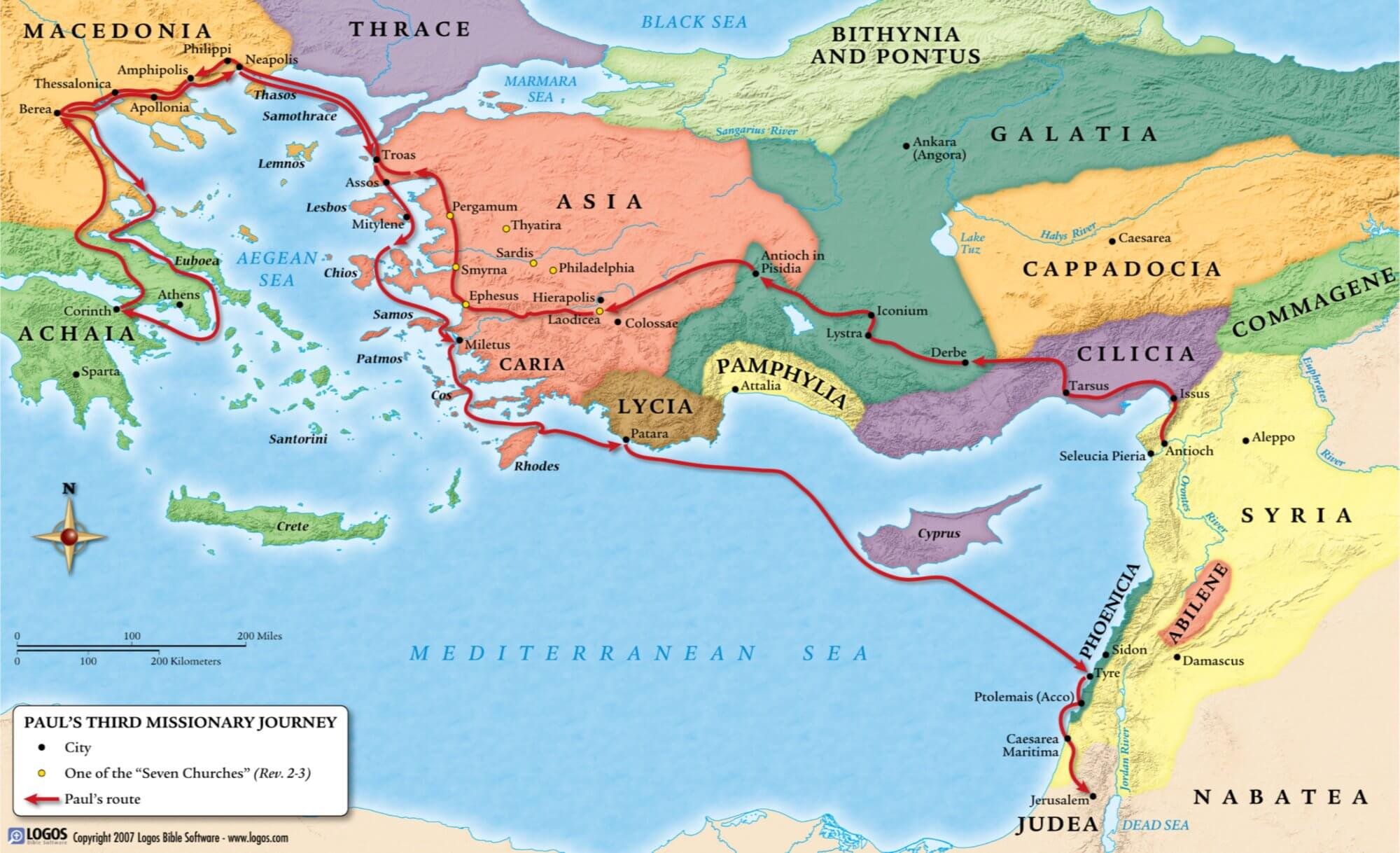What the movement of God looks like
I’m working my way through the book of Acts. Here’s what I’m learning with a lot of help from Eckhard Schnabel.
Paul’s final journey to Jerusalem (Acts 20-21:1-16) was planned so that Paul and his team could visit five churches along the way, some were started by Paul (Troas, Ephesus) some by others (Tyre, Ptolemais, Caesarea). Luke’s account shows how the churches share the same characteristics as the church in Jerusalem (Acts 2:42-47). They too were devoted to the Word, the breaking of bread, prayer and worship, fellowship, sharing of possessions, They too faced opposition yet God was adding to their number.
In depicting these communities of disciples Luke is reminding us what the mission of God looks like.
He tells us how long Paul spent with each community: three months in Greece, seven days in Troas, seven days in Tyre, one day in Ptolemais, several days in Caesarea. Some of the disciples are mentioned by name. Luke is showing us that the outcome of God’s mission is people learning to love and obey the Lord Jesus together. This takes precedence over plans, programs, strategies, and structures.
This is what the movement of God looks like—disciples and churches from Jerusalem to the ends of the earth. Every place, every people group.

